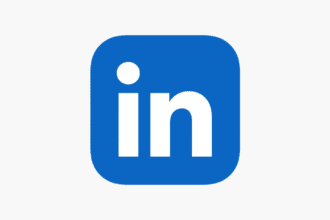The allure of becoming a full-time content creator is stronger than ever in 2025.
Imagine building a thriving community around your passions, sharing your unique voice, and earning a living doing what you love.
But for aspiring and established creators alike, a burning question often arises: who earns the most among content creators on the biggest platforms – YouTube, TikTok, or Facebook?
It’s a complex puzzle with no single, simple answer. Each platform offers unique monetization avenues, audience dynamics, and earning potentials.
READ ALSO: The Four Silent Killers of Your Content Creation Journey in Nigeria
This isn’t just about direct ad revenue; it’s about a sophisticated mix of strategies.
Ready to unlock the secrets of creator income? Let’s dive deep into the earning landscape of these social media giants and help you propel your own creator journey!
The Content Creator’s Golden Age: A Multi-Platform Hustle
Welcome to the creator economy, where individuals are building empires from their bedrooms.
However, the most successful creators rarely put all their eggs in one digital basket. Earnings are typically diversified, coming from multiple sources across various platforms.
Understanding the specific strengths and weaknesses of each platform’s monetization model is your first step to building a truly profitable creator business.
Breaking Down the Bucks: Earning Potential by Platform
Let’s dissect how creators primarily make money on YouTube, TikTok, and Facebook.
1. YouTube: The Veteran’s Goldmine for Video Creators
YouTube has long been the most established platform for direct creator earnings, primarily through its Partner Program.
READ ALSO: Video Content or Graphics — Which One Drives More Traffic?
- Primary Monetization:
- AdSense: Creators earn a share of the revenue from ads shown on their videos (based on CPM/RPM – cost/revenue per mille/thousand views). This is the traditional backbone.
- Channel Memberships: Fans pay a recurring fee for exclusive perks.
- Super Chat & Super Stickers: Viewers pay to highlight their messages during live streams.
- Merchandise Shelf: Sell branded merchandise directly below your videos.
- YouTube Shorts Fund: A separate pool for short-form video creators.
- Pros: Long-form video offers higher ad revenue potential due to longer watch times; diverse, well-established monetization tools; a mature audience base.
- Cons: High barrier to entry for AdSense (1,000 subscribers, 4,000 watch hours or 10M Shorts views); content production cycles can be lengthy; platform saturation.
- Earning Potential: For direct ad revenue, YouTube generally offers the highest returns due to its robust advertising infrastructure and longer content formats. Top YouTubers can earn millions annually from AdSense alone, though this is rare.
2. TikTok: The Viral Sensation’s Fast Track for Short-Form Creators
TikTok burst onto the scene, revolutionizing short-form content. While known for virality, its direct monetization has been a learning curve.
- Primary Monetization:
- Creator Fund: Pays creators based on views, engagement, and region (rates vary widely and often feel low for high view counts).
- LIVE Gifting: Viewers send virtual gifts during live streams, which can be converted to cash.
- Creator Marketplace: Connects creators with brands for sponsored content.
- TikTok Shop: Allows creators to sell products directly through shoppable videos and LIVEs, earning commissions.
- Pros: Incredible potential for rapid audience growth and virality; lower barrier to entry for gaining initial traction; strong direct brand deal opportunities.
- Cons: Creator Fund earnings can be inconsistent and often significantly lower per view than YouTube’s AdSense; algorithm is highly unpredictable; short-form content is less conducive to long-term ad exposure.
- Earning Potential: Can be very high, but often relies heavily on brand deals and LIVE gifting rather than direct platform payouts. A viral video doesn’t always equal substantial Creator Fund income.
3. Facebook (Meta): The Community & Commerce Powerhouse for Varied Creators
Facebook, leveraging its massive user base and sophisticated advertising tools, offers a blend of monetization methods, often excelling in community engagement and e-commerce.
- Primary Monetization:
- In-Stream Ads: For eligible long-form videos (similar to YouTube’s AdSense).
- Stars: Virtual gifts viewers can send during videos and LIVEs.
- Subscriptions: Fans pay a monthly fee for exclusive content or badges.
- Brand Collabs Manager: Connects creators with brands for sponsored content.
- Facebook/Instagram Shop: Creators can set up shops and earn commissions on sales, often directly integrating into content.
- Pros: Strong community features and engagement potential; cross-platform synergy with Instagram (especially for visual creators); well-established commerce tools; supports diverse content formats (video, text, images, Reels).
- Cons: Ad revenue might be lower per view than YouTube’s for video; discoverability can be challenging without external promotion; often requires an existing audience to truly monetize.
- Earning Potential: Excellent for creators who can diversify their income, particularly through subscriptions, brand deals, and direct commerce.
The Million-Dollar Question: Who Truly Earns the Most?
So, after breaking it down, who earns the most among content creators on these platforms? It’s rarely about which platform inherently pays the most per single view or subscriber. The answer is nuanced:
- For Direct Platform Ad Revenue: YouTube still often leads. Its longer content formats allow for more ad impressions per video, and its AdSense payouts have been consistently higher for comparable views compared to, say, TikTok’s Creator Fund.
- For Overall Creator Income (The Big Picture):
- Brand Deals & Sponsorships: This is often the highest-paying avenue for creators across ALL platforms. A successful creator, regardless of platform, leverages their engaged audience to secure lucrative partnerships. A TikToker with 100k highly engaged followers might command higher brand fees than a YouTuber with 500k less engaged subscribers.
- Niche & Audience Engagement: A smaller, highly engaged niche audience can be far more valuable to brands than a massive, generalized one.
- Monetization Mix: The creators who maximize their earnings diversify. They might use YouTube for AdSense, TikTok for viral reach and brand deals, and Facebook for community subscriptions and e-commerce.
- External Products & Services: The truly wealthy creators often use their platform as a funnel to sell their own products, courses, books, or services. These direct sales can far outstrip any platform-generated income.
The Verdict: While YouTube might offer the most stable direct ad revenue, the highest-earning content creators in 2025 are those who strategically leverage multiple platforms, focus on deep audience engagement, and prioritize high-value brand partnerships and the sale of their own offerings.
Your Earning Blueprint: Strategies for Maximizing Creator Income
Want to join the ranks of top earners? Here’s your strategy:
- Diversify Your Income Streams: Don’t rely on one platform or one monetization method. Explore ads, subscriptions, merch, and especially brand deals.
- Build an Engaged Community: Focus on genuine connection. Loyal followers are more likely to support you financially, whether through purchases, subscriptions, or engaging with sponsored content.
- Focus on High-Value Brand Deals: Develop a media kit, understand your audience demographics, and actively seek out brands that align with your content.
- Understand Your Analytics: Dig into your insights. What content keeps viewers watching longest? What types of videos drive the most engagement? Optimize for what performs well and pays best.
- Create Evergreen & Valuable Content: While trends are great for virality, evergreen content (like tutorials, long-form stories) continues to earn revenue and attract new audiences over time.
- Explore Direct-to-Fan Monetization: Patreon, Buy Me a Coffee, or your own e-commerce store can create direct revenue streams independent of platform algorithms.






